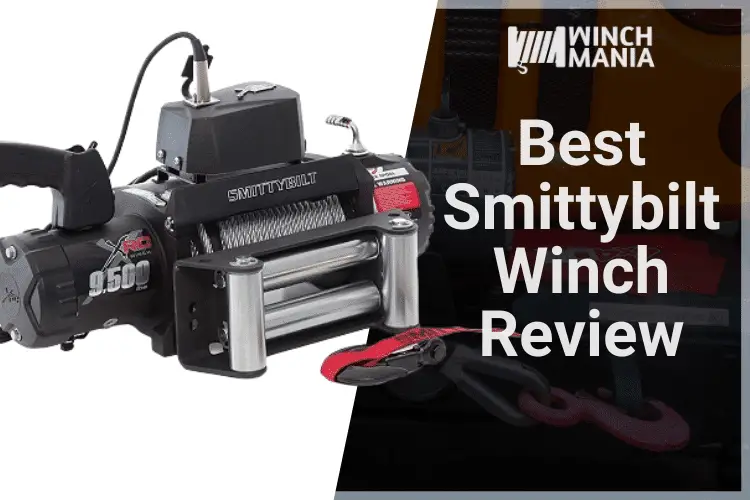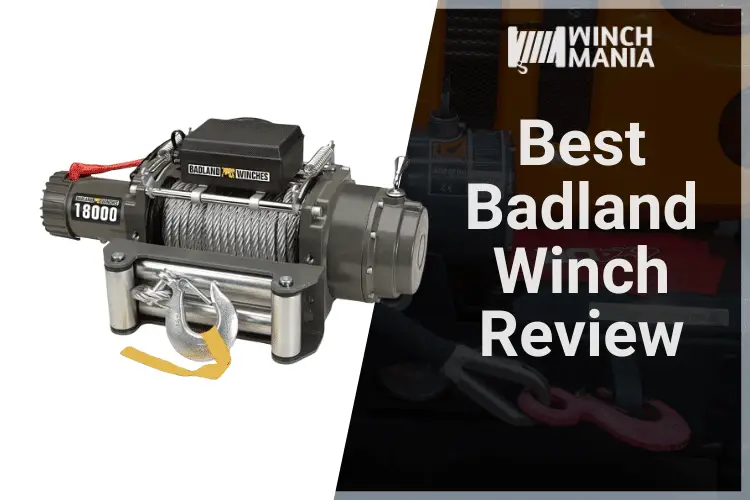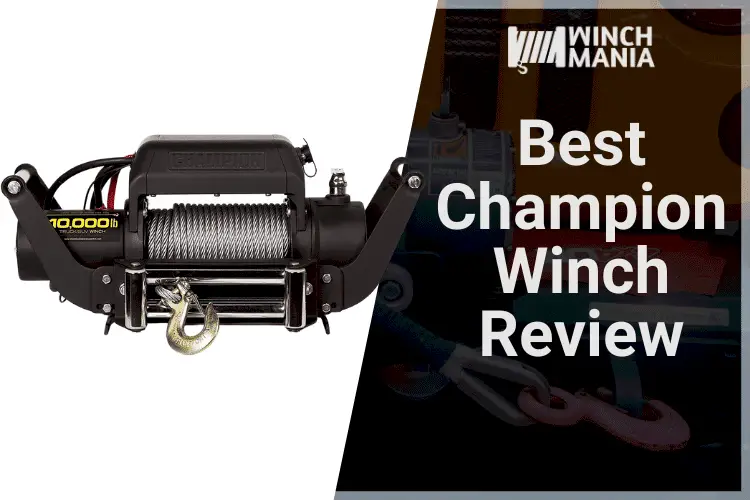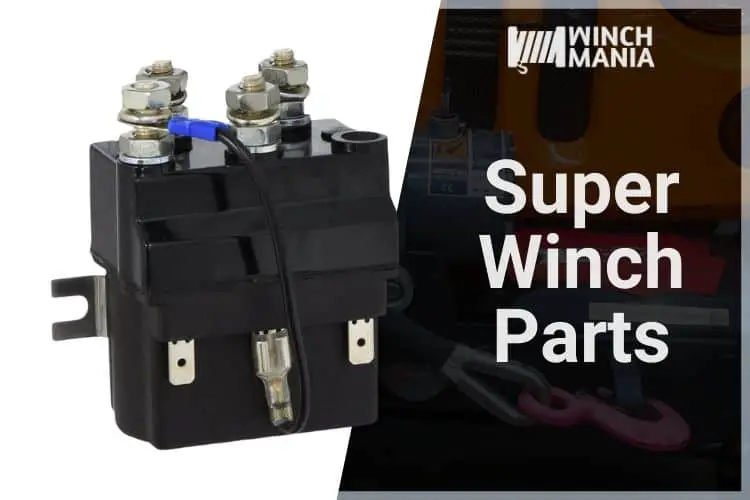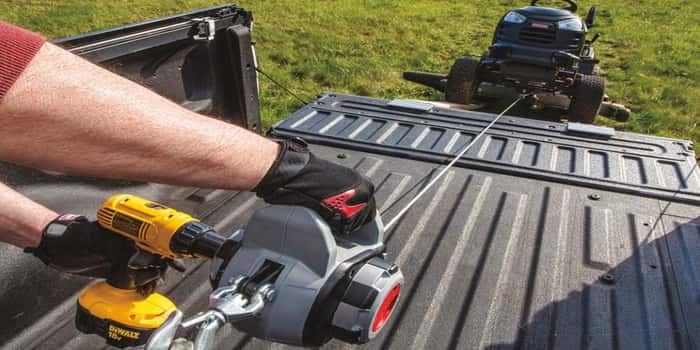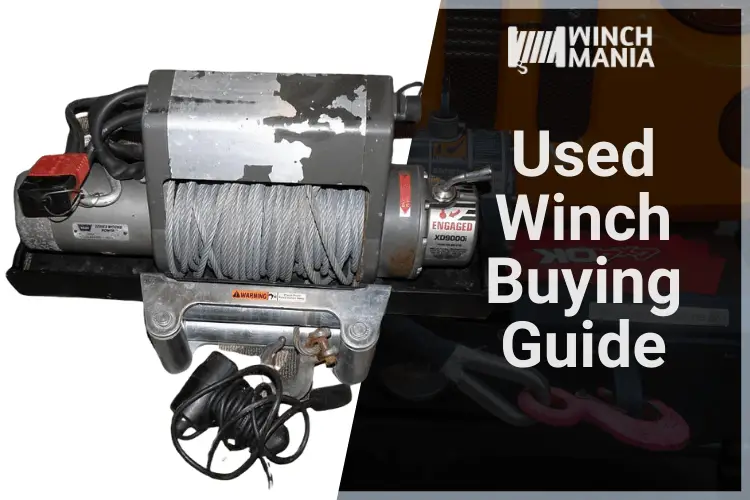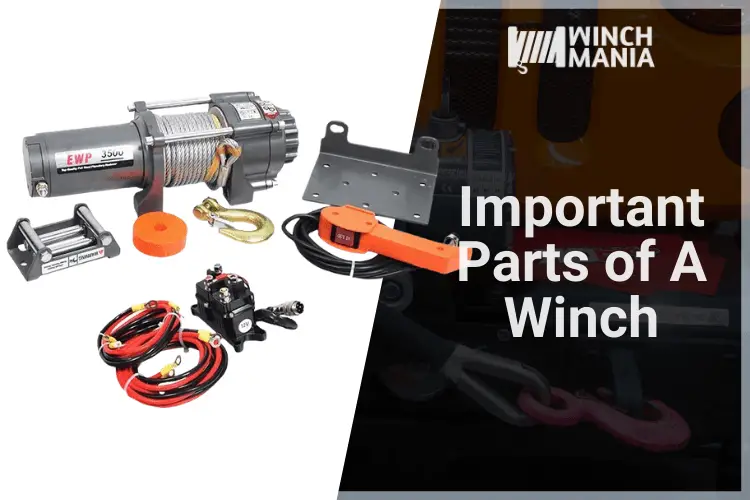
Understanding the various parts and their functions of a winch is one of the best ways to determine the best winch for you. Each part has their own purpose, and each variation of a part will perform better than others in certain situations.
Each person who needs a winch needs it for their own specific needs. Not all winches have the capacity to fill those needs. However, if you have the right and sufficient understanding of the parts, you can make a better decision of what winch to purchase.
With that in mind, there are a lot of important parts in a winch. But for this article, we will only examine the parts that are necessary for the winch’s mechanical function. Let’s look at the winch’s gear types, motor differences and solenoid functions.
Note: If you’re planning to buy a winch. Then you can read my reviews of X bull winches, Smittybilt Winches, Warn Winches, Mile Marker Winches, Superwinch LT Winches, Viper Winches, Ironton Winches, Superatv Winches, Harbor Freight Winches, Rugcel winches , Orcish Winches, Rough country Winches, Bravex winches, Sinoking Winches, Lewis Chainsaw Winches,Tuffstuff Winches and Gas powered capstan winches. You should also read about winch ropes and winch battery before you buy one. I have also reviewed hand winches, portable winches and boat trailer winches. Read these reviews if you ever plan to buy one.
Winch Gear Types Explained
Winches mainly come in three different types of gear systems. They are: Planetary gears, Worm gears, Spun gears.
1. Planetary Gear
Planetary gears are the most common and most popular for automatic transmissions. They are named planetary gear because they look like the sun with some revolving planets. It’s actually a gear set inside or on a large gear.
Nowadays most electric winches use the planetary gear. They are typically more compact which allows for less cost and weight. They offer strength and smooth operation with good resistance to torque loads. The planetary gear systems have a power transfer efficiency of 65%.
In a basic planetary gear setup, there is a sun gear (central gear), planet/s gear (surrounds the sun gear) and a ring gear that encloses the entire setup. It is important to note that the more planet gears there are in a planetary gear, the higher its torque transmission capability is.
This means that the higher the planetary stage system is, the more efficient the winch pulling is.
There are a lot of advantages to a planetary gear system.
- Higher gear ratio in more compact spaces
- Lighter in weight
- More efficient pulling power
- Higher torque transmission
- Higher stability
- Longer service life
It also has its disadvantages.
- Higher heat accumulation on the brake unit
- More expensive
- Noisier
2. Worm Gear
Winches with worm gear are ideally suited for workman or industrial applications. They’re not generally used on off-road winches. Their special features are lowering and load holding. That’s why they’re a popular choice for tow trucks.
The worm gear has a power transfer efficiency of 35 to 40%. They provide very high reliability, reduction, and built-in braking mechanism. They’re simpler and stronger than other gear systems
Worm gears have one special feature that no other kind of gear possesses. The worm can easily turn the gear, but the gear can’t turn the worm. This is a great feature when hoisting. If the power fails mid operation, the chances of the load crashing is very minimal. The setup of a worm gear essentially has an automatic locking feature that acts as a brake.
Their downside is that they pull far slower than electric winches.
3. Spur Gear
Spur gear has a power efficiency of 75 percent. They are the most common type of gear. They consist of one small wheel-shaped gear and one large wheel-shaped gear. The smaller gear connected to the motor and makes the larger one to run. They’re not expensive but still perform well.
Perhaps the greatest drawback from having these cheap gears is that they are noisy. Their individual teeth impact each other upon each turn. The impact also increases the stress on the teeth.
Spur gear winches have fairly low amperage draw. But they are fast. Only the legendary WARN M8274, which is one of the top winch manufacturers, has a spur gear still on the market.
Winch Motor Type Explained
Winches come with two types of DC motors: Permanent Magnet Motors(PM) and Series Wound Motors(WM).
All DC winch motors have a set of coils inside them which is called the armature. Inside this armature, there is either another set of field coils or a set of permanent magnets which is called stator.
The stator creates a magnetic field which causes the armature (or rotor) to rotate when an electric current flows through it.
The higher the horsepower rating, the more power and torque the motor will have. The motor’s horsepower has a direct effect on both pulling power and line speed.
1. Permanent Magnet Motors
The stator of permanent motor uses permanent magnets and there are no field coils. They cause very little strain on the battery than series-wound motors and typically cost less. They offer good pulling power and performance.
Permanent magnet motors are better suited for light to medium duty winching jobs. As permanent magnet motors are less tolerant to heats, winching time and load should be taken carefully. This type of motor can lose power in extremely cold conditions.
It should also be noted that a permanent magnet motor suffers from magnetic wear over time. This means that it becomes less effective during its lifetime.
2. Series Wound Motors
When it comes to the series wound motor, the field coils are connected in series with armature coils. They are very powerful and generate the most torque for a given current. SW motor uses more current over a PM motor because they use field coils to generate the magnetic field.
Series wound winches are heavier duty winches which will help you to overcome the most difficult recovery situations. They usually cost more and sometimes require upgrading the alternator, battery or other components for reliable performance. The series-wound is a better option for cold weather or heavy-duty use.
Unlike the permanent magnet motor, a series wound motor does not suffer much performance deterioration over time. It produces a more reliable pulling power.
Winch Solenoid
What is the Solenoid?
Solenoids are electromagnetic switches. The winch solenoid is used to control the movement of the winch motor. Some machines come with two solenoids. But, those with four solenoids tend to be more dependable and efficient.
Solenoid Mounting
This is one of the major considerations. Winches can either come with an integrated or Remote Solenoid pack. An integrated solenoid is part of the winch and a remote solenoid is externally mounted off of the winch. Both mounting options have some benefits.
An integrated solenoid considerably lessens the wiring and virtually decreases the chances of a short circuit. In this setup, the solenoid is mounted above the winch motor.
On an externally mounted setup, the main benefit is that the solenoid is spared from the heat building up from the motor.
A lot of the causes of winches are due to the damages the solenoid takes. This happens if it is expose to rocks, sand or other debris during an off-road trip. Whatever solenoid mounting you choose, make sure that the solenoid is well protected.s
2 or 4 Solenoids?
Winches have 2 or 4 solenoids. Permanent magnet motor winches typically come with 2 solenoids. They’re less powerful, cheaper, less reliable and heavier. On the contrary, Series wound motor winches typically come with 4 solenoids configurations. They’re lighter, stronger and more reliable.
Before You Leave…
These parts of a winch play a major part in its overall pulling performance. The power, the efficiency, and the reliability of a winch is deeply affected by these parts’ individual contributions to the machine.
If you are planning on getting yourself a winch, check these parts – you might save yourself a fortune in the long run.
Any more questions about winch parts? If yes, then ask in the comment section below. I will reply ASAP.
